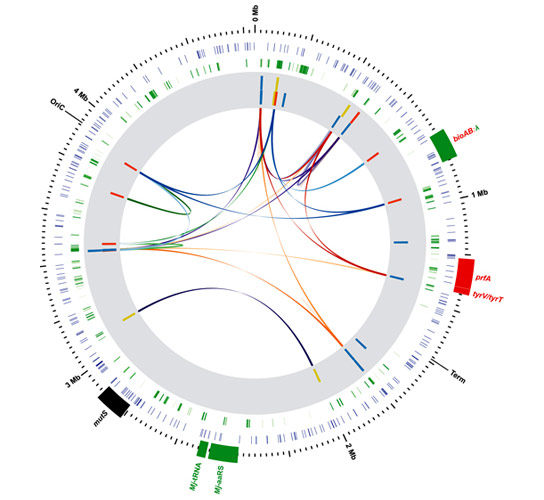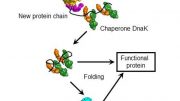
New research develops genomically recoded organisms (GROs) with controlled growth using synthetic amino acids. This ensures safer use of genetically modified organisms in various applications. Credit: Yale University
New research details the construction of a series of genomically recoded organisms (GROs) whose growth is restricted by the expression of multiple essential genes that depend on exogenously supplied synthetic amino acids. These GROs will ensure genetically modified organisms can be safely confined in the environment, overcoming a major obstacle to the widespread use of GMOs in agriculture, energy production, waste management, and medicine.
The Yale researchers rewrote the DNA of a strain of bacteria so that it requires the presence of a special synthetic amino acid that does not exist in nature to activate genes essential for growth. Amino acids are the building blocks of proteins, which carry out life’s functions. This new method of bio-containment, reported online on January 21 in the journal Nature, solves a longstanding problem in biotechnology.
“This is a significant improvement over existing biocontainment approaches for genetically modified organisms,” said Farren Isaacs, assistant professor in the Department of Molecular, Cellular, and Developmental Biology and the Systems Biology Institute at West Campus, and senior author of the paper. “This work establishes important safeguards for organisms in agricultural settings, and more broadly, for their use in environmental bioremediation and even in medical therapies.”
Isaacs, Jesse Rinehart, Alexis Rovner, and fellow synthetic biologists at Yale call these new bacteria genomically recoded organisms (GROs) because they have a new genetic code devised by the team of researchers. The new code allowed the team to link growth of the bacteria to synthetic amino acids not found in nature, establishing an important safeguard that limits the spread and survival of organisms in natural environments.
In a second study, Isaacs, Ryan Gallagher, and Jaymin Patel at Yale devised a strategy to layer multiple safeguards that also limit the growth of GMOs to environments that contain a different set of synthetic molecules. Published Jan. 21 in the journal Nucleic Acids Research, this study describes a complementary set of distinct and portable safeguards capable of securing a wide range of organisms.
These safe GMOs will improve the efficiency of such engineered organisms, which are now being used in closed systems, such as the production of pharmaceuticals, fuels, and new chemicals. Concerns about the use of GMOs in open environments, however, have limited their adoption in other areas.
The authors also say that the new code paired with artificial amino acids will allow scientists to create safer GMOs for use in open systems, which include improved food production, designer probiotics to combat a host of diseases, and specialized microorganisms that clean up oil spills and landfills.
“As synthetic biology leads to the emergence of more sophisticated GMOs to address these grand challenges, we must assume a proactive role in establishing safe and efficacious solutions for biotechnology, similar to those who worked to secure the Internet in the 1990s,” Isaacs said.
References:
“Recoded organisms engineered to depend on synthetic amino acids” by Alexis J. Rovner, Adrian D. Haimovich, Spencer R. Katz, Zhe Li, Michael W. Grome, Brandon M. Gassaway, Miriam Amiram, Jaymin R. Patel, Ryan R. Gallagher, Jesse Rinehart and Farren J. Isaacs, 21 January 2015, Nature.
DOI: 10.1038/nature14095
“Multilayered genetic safeguards limit growth of microorganisms to defined environments” by Ryan R. Gallagher, Jaymin R. Patel, Alexander L. Interiano, Alexis J. Rovner and Farren J. Isaacs, 7 January 2015, Nucleic Acids Research.
DOI: 10.1093/nar/gku1378









ANYBODY HEARD OF SOMETHING CALLED aDAPTATION ??
wHAT HAPPENS WHEN WE GIVE THE GREEN LIGHT TO FRANKEN MONSTERS
AND THEY adapt TO REPRODUCE?? perhaps the scientests should watch
“jurassic park” a few more times LOL !!!